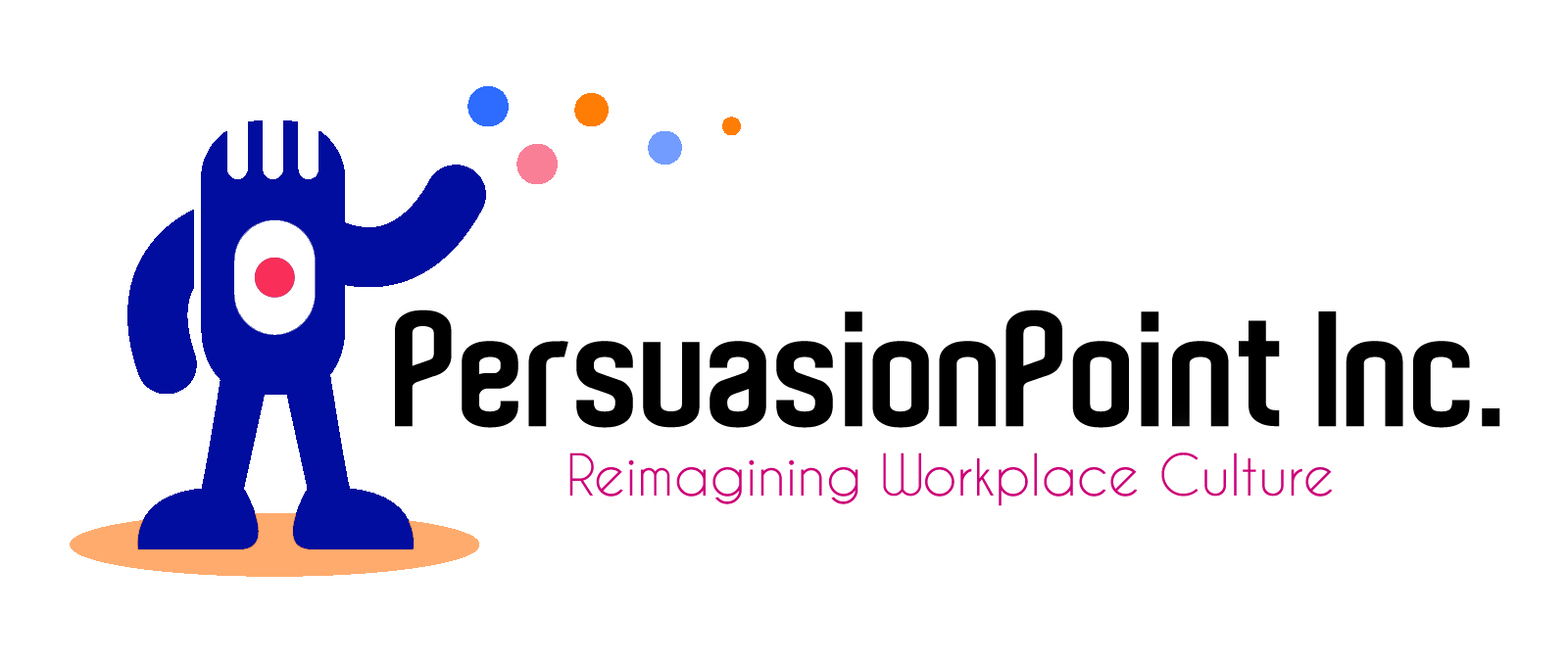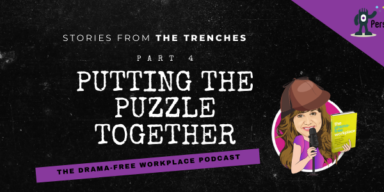The floodgates have opened. Entertainment, media, tech – powerhouse men in each of these industries have been brought down by allegations of egregious sexual harassment in the past few years. As we watch well-known figures fall, from Hollywood mega producer Harvey Weinstein to Fox News host Bill O’Reilly, questions about “who knew what, when” swirl: Did employers know about the behavior and simply look the other way?
As leaders in our own complex business environments, we must ask ourselves: What can we do to prevent sexual harassment in our own workplaces?
The Big Question: Why?
An easily identifiable theme emerges from these stories – the men accused of sexually inappropriate conduct have immense power. For these industry powerhouses, the temptation to use (abuse) that power is apparently so strong that they find themselves flexing their corporate muscle far beyond the board room.
The men featured in recent headlines are not only sexual predators, they’re also notorious for overly-aggressive behavior, exhibiting a strong taste for intimidation tactics to satisfy their hyper-competitive egos.
In short, the question one might want to ask these men – why would you behave in such a way? – was answered by Harvey Weinsten when he said “I’m used to it” when asked how he could assault women so easily.
Organizational Tolerance= A Culture of Complicity
While reports of the behavior itself are unsettling, even more disturbing to many of us is the degree to which corporate leaders (and boards of directors) tolerated – if not outright accepted – it.
The cases that are in the news have several characteristics in common: (1) they include a long trail of allegations that lead to monetary settlements with strict confidentiality clauses, and (2) they reveal a corporate practice of continuing to renew employment contracts despite knowing about repeated allegations and settlements. In the case of Harvey Weinstein, there’s an even more alarming and (I hope) unique element: a contractual clause with specific provisions on how (apparently inevitable) future claims of sexual harassment would be addressed.
It’s no wonder that these powerful men continued their predatory behavior, in some cases for decades. The message they received from corporate leadership was clear – “Don’t worry, bro, we’ve got your back.”
Armed with that message, there was simply no incentive for harassers to stop.
Changing the Corporate Mindset
The silver lining here is that these stories should serve as a strong wake up call for companies and corporate leaders. The stories tell us that they – WE – must do better. And despite claims to the contrary, it’s really not that complicated!
Here are a few immediate steps companies should take to avoid creating or enabling a workplace culture of complicity:
1. Skip the short-sighted cost-benefit analysis
“It was a business decision” – this is the justification so many executives who cover up for serial sexual harassers offer for their actions.
Sure, sometimes companies must make tough decisions based on a strict profit analysis. But in sexual harassment cases, this analysis is fatally flawed.
Every time a company makes a decision based on the “value” the harasser brings, they neglect to do simple math – by failing to subtract the cost of keeping him around. And that cost amounts to much more than just settlement amounts and legal fees – it’s also high employee turnover, low productivity, dipping morale, and an incredibly negative effect on brand reputation. Not to mention adding a hefty “crisis management” line item to your P&L.
In short, there is no good business reason for tolerating this behavior. And beyond the “traditional” business analysis of looking at profit and loss, a company who tolerates, enables or encourages this behavior will send a strong message about their culture – and the message is one that fewer employees find tolerable. This then becomes an issue of brand management, talent acquisition, and retention. And of course, these are business issues that leaders should take just as seriously as a simple cost-benefit analysis.
2. Reinvest corporate attitude towards reporting workplace concerns.
This is not your grandfather’s workplace. Employees are talking – and what they’re sharing often isn’t pretty.
If they’re not sharing stories at work, they’re posting on employer review sites, sharing on social media, or writing blogs: employees will get the word out. Today’s reality means ignoring the problem of sexual harassment doesn’t make it go away, it only robs you of the opportunity to control the narrative.
It pays to be proactive – and to encourage employees to do the same. If you become aware of issues related to overly-aggressive, wholly unprofessional or harassing conduct, deal with it. Quickly. Fairly. Employers who take this type of proactive stance are almost always able to address issues before they become impossible to fix. Think of the time, energy and money you’ll save by nipping issues in the bud. And imagine the brand reputation you’ll create as a result.
3. Think outside the compliance box.
In the movie Office Space, Jennifer Aniston plays Joanna, a waitress who is supposed to wear “flair” (buttons) on her uniform. Her boss, Stan, wants her to “express herself” by wearing more flair than the handbook requires. Joanna’s response is to tell Stan that, if he wants her to wear more flair, he should put it in the employee manual.
In other words, her attitude is that, since she’s doing the bare minimum, her boss shouldn’t complain, he should view her efforts as enough.
Don’t be a Joanna. If your immediate response to these scandals is to redistribute your harassment prevention policy or require managers to attend stale training that “teaches” them what unlawful harassment looks like, stop right now. This will do zero to move the needle. In fact, it has the potential to make things worse by sending a message that, like Joanna, your goal is to do the minimum.
If your company wants to be seen as an innovator, a creative disruptor, then you must go beyond doing the minimum. Don’t rely on a written policy to define acceptable (or unacceptable) behavior – talk the talk, communicate creatively (perhaps a video from your CEO addressing these issues?), and stay ahead of the game so your employees understand that you expect employees and leader alike to conduct themselves in ways that go far beyond what the law requires. And provide training for all employees, not just managers. Don’t view employee training with the old-fashioned attitude that it’s simply a way to give employees a blueprint on how to sue you. In fact, when done right, employee training makes it less likely that your employees will sue you. Coordinate your policies and training to make sure the message they give employees is: “this is what we believe, this is what we stand for, this is what we promise, and this is what we expect.” By doing this, you change the narrative and make it clear that you and your company take these matters seriously.
4. Develop a deliberate plan to include more women in leadership.
I have a vivid recollection of an SAT question that discombobulated me. It was: “running is to marathon as rowing is to ____.” All four of the choices might as well have been written in Greek (the answer was “regatta”).
I grew up in the inner city, so it goes without saying that we didn’t have regattas in my ‘hood!
This example perfectly captures the problem with assuming that we all understand the same things. While I’d like to think that the majority of male corporate leaders at least try to discourage sexual harassment, it would, simply put, be immensely helpful to have women (plural) in the room to give the context – and nuance – that male leaders typically do not have the life experience to understand, just like I didn’t have the life experience to know about regattas.
In order to make a real change, we need to bring the stakeholders into the conversation. Assuming your workplace is like most and is made up of an even number of women and men, it only makes sense that you begin to take proactive and strategic steps to promote women into leadership. And the good news is that doing this will have benefits that go beyond preventing sexual harassment.
This is only a start, but now is as good a time as any to begin this journey.
If your company is serious about its commitment to creating a safe, comfortable, productive, and profitable business, there is no room for this type of behavior. And, just as importantly, there is no place for leaders who are willing to turn a blind eye.

About PersuasionPoint
Patti Perez is founder and CEO of PersuasionPoint, a modern-day consulting firm dedicated to teaching leaders and teams how to create and sustain healthy, equitable and inclusive workplace cultures. Patti is the best-selling, award-winning author of The Drama-Free Workplace (Wiley 2019), and draws from the book’s themes to provide practical, authentic, and action-oriented solutions to help companies achieve true diversity and equity, and to create environments of belonging and inclusion.
Patti and the team provide services specifically tailored to address workplace struggles with recruiting, retaining, promoting and fully valuing diverse employees – including consulting, leadership training, and boot camps for diverse attorneys who are emerging leaders.
Contact Patti here or email her directly at Patti@PersuasionPoint.com.
















